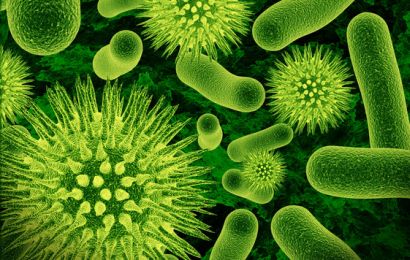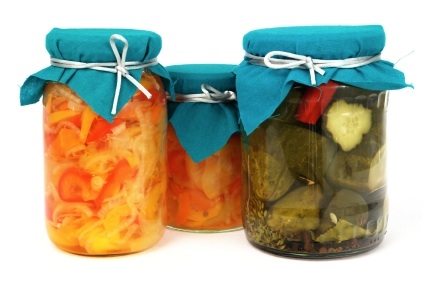
“Why would I eat rotten food?” some ask when you mention fermented food. “I think you mean lacto-fermented”, I suggest. “Cultured” is the better word. Cultured foods have been infused with live bacteria cultures and are therefore high in probiotic, beneficial bacteria.
“Lacto-fermented” is another word for cultured foods and drinks. Other fermented products include wine, beer, coffee, chocolate, bread, cider, sourdough, pickles etc., which are fermented alright, but these doesn’t have the health benefits from the beneficial, symbiotic bacteria and does not fall in the category “live foods” or “RAW food”. Even yoghurt, cheese, sour cream, buttermilk and kefir of today are pasteurized and homogenized, all probiotics processed to death. You would have to make your own RAW yoghurt and kefir to get a real cultured, probiotic food product.
Fermentation is a metabolic process in which microbes such as bacteria or fungus convert organic matter like sugar to acid, gas or alcohol. To us, fermenters, it is particularly these probiotic lactic acid bacteria, naturally living on vegetables and plants, that that are interesting. They convert the carbohydrates of the fermenting food subjects like kraut to lactic acid and gas – hence the hissing and burping fermentation jars.
You may have heard that particular foods such as sauerkraut, kefir, kimchee, kombucha or miso soup are very good for you. For your gut health. And these probiotic, symbiotic bacteria are friendly bacteria, not harmful.
Probiotic meaning good for you, symbiotic meaning that they live in symbiosis with us in a mutually beneficial relation.
I you don’t like bacteria, you’re on the wrong planet..
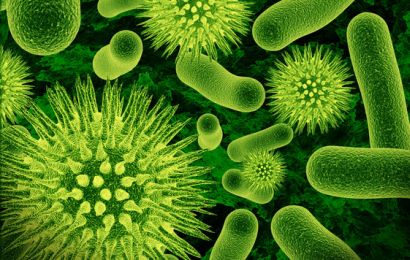
lactobacillus acidophilus and lactobacillus bifidus
PROBIOTICS
Lacto-fermented foods are high in the beneficial lactic acid bacteria, or lactobacillales. These acid-tolerant bacteria are naturally found in milk and on the surface of plants and vegetables, causing fermentation, hereby producing lactic acid that wards off the growth of spoilage agents.
Your gut flora actually consists of many of the same microbes found in cultured veggies and other cultured foods. People whose intestinal flora lacks certain bacteria, often suffer from weak immune system, allergies, asthma, lactose intolerance and other food sensitivities, candida and other yeast infections, as well as most other problems related to digestion such as irritable bowel syndrome (IBS), Chrohn’s Disease, ulcerative colitis, diverticulitis, constipation, and other inflammatory diseases of the intestines.
These friendly bacteria are indispensable. They ward off morbid microforms, prepare food for absorption and nutrient assimilation, speed up the food travel time throughout the intestines, maintain the intestinal wall and neutralise toxins and absorption into the body. Probiotics also produce a variety of beneficial substances such as almost all the B-vitamins (B12 too..!), vitamin K, the natural antiseptic lactic acid as well as acidophilin, which aid digestion. On top of that they protect you against germs, so not even salmonella contamination will affect you.
Eating live cultured foods replenishes the gut flora naturally, people reputedly throwing away the toxic meds they’ve been trying to fight their digestive ailments with, after taking up cultured foods in their diet.
Asian countries have a tradition for fermented foods, and well enough, in countries such as Japan, China and Korea, bowel diseases are less common.
In his numerous books about the bowel system, Dr. Bernard Jensen claims all maladies originate from the bowels not functioning properly.
Antibiotics are prescribed for a common cold these days, taking out not just the bad bacteria but also the naturally occurring good bacteria, undermining your immune system. Even if you never took penicillin yourself, you ingest residues of all the antibiotics from all the factory animals in the meat and dairy products.
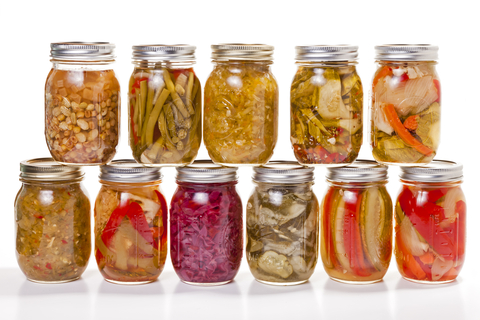
WHAT TO FERMENT?
You can make fermented foods from most things. Root vegetables. Cabbages. All vegetables, in fact. Grains. Pulses. Like soy beans. Bread. Dairy. Fruits. The process can be difficult to control with fruits that are high in sugar, though.
Most cultures around the world eat some type of fermented food items, for instance..
Saurkraut, fermented cabbage, from Germany.
Tsukemono, fermented cabbage with kelp or kombu seaweed, from Japan.
Kimchee, the Korean version, made with fermented Chinese cabbage (nappa cabbage), radish, scallion and cucumber, has loads of chili, ginger and garlic, hence a bit spicy
Akakoji is fermented red rice from China.
In Japan they ferment rice and make sake, and of course soy beans to make miso, soy sauce, tempeh and natto.
In most of Asia they eat fish sauce with just about everything, a savoury sauce made of mashed-up, fermented, salted fish.
In Finland, people eat a fermented fish, muikku.
In Norway rakfisk, salted and fermented trout or char, eaten raw.
In Sweeden surströmming, a herring left to ferment for minimum six months.
In Iceland people eat hákarl, dried fermented shark meat jerky – the recipe dating back to the Vikings – as well as surtang, the local version of sauerkraut, consisting of seaweed left to ferment underground throughout winter.
The Greenlandic Innuits ferment little auk birds in the hollowed-out body of a seal for seven months. Auks are tiny birds, so the Inuits take about 500 of them, pack them in a sewed-up seal skin, sealed with seal fat to repel flies and weighed down with a big stone. Beaks, feet, feathers and all. The dish is named kiviak.
The indigenous Bribri people in the Andes mountains chew corn to become make them become saturated with salivary amylase enzymes, which break down starches to simple sugars, which ferment into the drink chicha.
Lacto-fermented juices. Health freaks are often ridiculed for drinking lacto-fermented cabbage juice or lacto-fermented carrot juice. One can make these drinks or buy bottles from the German company Voelkel in most health food shops. I saw lactofermented beetroot juice, carrot juice and cabbage juice. Supposedly super healthy, perhaps not too tasty.
Dr. Ann Wigmore of the Hippocrates Health Institute, was treating patients with rejuvelac, a probiotic drink made of fermented wheat berries. You can replace wheat berries with other types of grain, rye and spring wheat being the most popular in this context, though. Also barley, oats, buckwheat, millet, quinoa and triticale are highly recommended. You can find the recipe for rejuvelac in most of Dr. Wigmore’s books or on the internet.
Kefir, fermented milk, is popular particularly in Eastern European countries such as Bulgaria.
The Greek have their yoghurt.
In India, they drink the cultured yoghurt drink, lassi.
Ukrainians are drinking buttermilk.
In Russia, people thought up kvass, a drink made of fermented rye bread dried into croutons, occasionally flavoured with fruit, berries, raisins or birch sap. One can make beet kvass, replacing the bread with beets.
Umeboshi is a fermented plum used in japanese cuisine.
Curtido is an El Salvadoran fermented salsa.
Kombucha is a drink of fermented tea with sugar, but can also be used as a yeast to make a really good sourdough bread. Add it to pancakes or waffles instead of milk to enrich them, making your baking both healthier and tastier..! Add kombucha or kefir to anything and enhance the nutritional value as well as digestibility, for instance ice cream, dressings, smoothies, sauces, pastes, patées, dips, spreads, porridge, soups, stews, cakes and other desserts. Jun is the Tibetian version, green tea fermented with honey, kombucha fungus replaced with the rare jun bacteria culture.
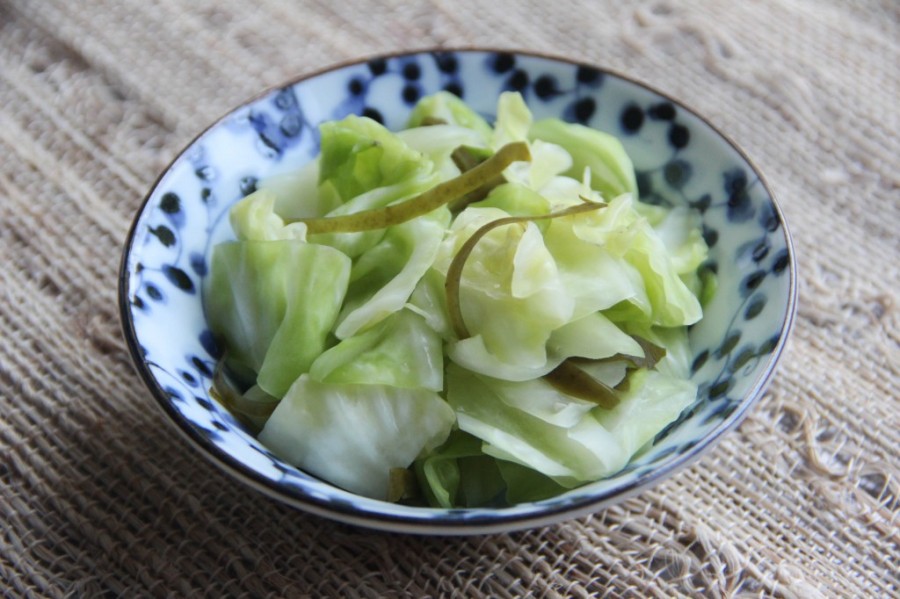
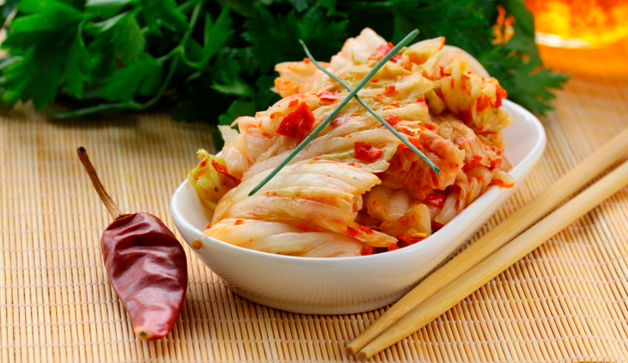
Japanese tsukemno (top) and korean kimchi (below)
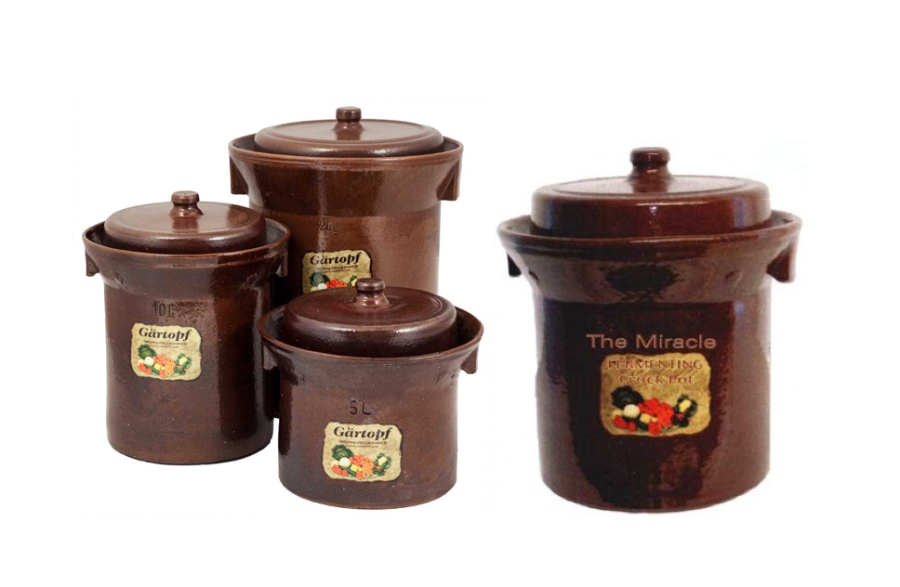 THE HOW…
THE HOW…
is easy. A ceramic crock pot is a really good thing to have. Or a Mason/Kilner jar. Both comes in all sizes. You can get a culture starter – some probiotics, that is – but you can do without. The bacteria naturally living on the surface of the vegetables or other fermentation subject are the best probiotics and are absolutely free of charge.
Rinse and cut or shred your vegetables. Add salt and weigh down your subjects with the two flat stones that comes with the crock pot. This draws out the juice from the vegetables, the water level of the crock pot increasing with time, eventually covering the fermenting subjects, preferably, as the process should be anaerobic, meaning no oxygen. Massaging the veggies with your hands will do just fine, if you don’t have stones. Some prefer stomping on the vegetables bare feet. Like stomping grapes when making wine.
You can add your potential flavourings at this point. Juniper berries, caraway seeds, fresh ginger or garlic, onion, bay leaves or currant leaves, goji berries, mustard, horseradish, cloves, peppercorn, spices, seaweed, edible flowers or herbs such as dill.
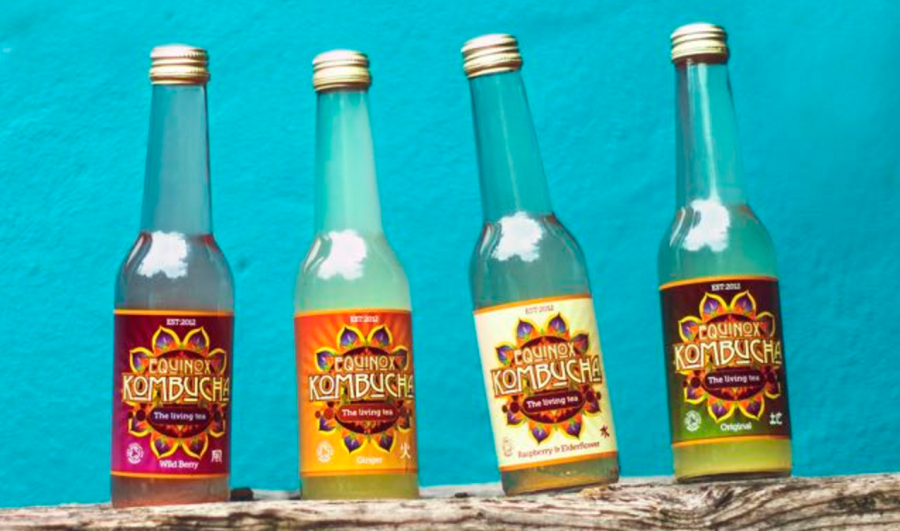
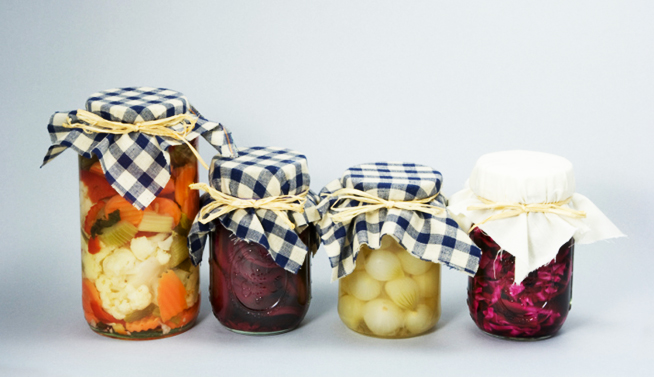
THE WHY…
Back to the initial question: Why would I eat fermented food? The fizzy, sour and teeming-with-live bacteria lacto-fermented food is kind of having a moment. A renewed enthusiasm. Maybe a reaction to the overly processed, manufactured foods of today. Like “RAW food” and “living foods” and “clean eating”. Maybe because we realized they’re exceedingly good for us.
Apparently, there are many reasons to incorporate fermented foods and drinks in your diet. Health reasons.
As previously mentioned, you restore the balance of bacteria in the gut when ingesting fermented foods and drinks, as they provide beneficial bacteria and thereby aid digestion and improve gastro-internal health. The gut flora. Fermented products are good for the digestion and for your gut, because of the probiotics outnumbering unwelcome bacteria.
They are also easy to digest as they are pre-digested, as the process of fermentation breaks down hard-to-digest cellulose in the food into ready-to-use carbohydrates, increasing the nutritional output of the food.
The body would normally need enzymes to digest, absorb and use the nutrients in one’s food, using up your digestive enzymes. Fermented food comes with enzymes. Having the proper balance of gut bacteria and enough digestive enzymes helps you absorb more of the nutrients from the food you eat. You will absorb many more of the live nutrients in the food you eat. Never mind supplements.
Fermented foods are rich in enzymes as well as other nutrients, and these are perfectly preserved with fermentation, while lost or diminished with most processing of food, such as pasteurizing.
Fermented foods is an asset to a RAW food diet, which can otherwise get a bit bland or end up “all nuts”, soaked nuts being the main ingredient in most RAW food dishes.
They say that the reason you age is the reduced amount of enzymes in the body, which is diminishing with age, causing your decreasing health and vitality. Leading to several ailments. All biochemical processes in the body are run by enzymes, why a diet low in enzymes is detrimental.
Fermented foods and drinks are detoxifying, both because they are high in enzymes and because they act as chelators as they draw out a lot of toxins and heavy metals in the body.
Cultured foods are high in essential, but hard-to-come-by nutrients such as vitamin K2, which can help to prevent arterial plaque build-up and heart disease as well as minimise negative bone effects of the nightshade family, potatoes and tomatoes etc. Lacto-fermented foods are an exceedingly good source of vitamin B’s like biotin and folic acid too. The friendly bacteria also produce enzymes and the essential short chain fatty acids which keep the colon healthy.
It has been said that 80% of your immune system is located in your gut. The probiotic bacteria in fermented foods aid in the development and operation of the mucosal immune system in the digestive tract and also aid in the production of antibodies that fight pathogens.
People even claim that eating cultured foods puts an end to the plaque on your teeth, and hence the end of tooth decay.
Miso is said to protect from radioactive radiation, no less.
A Danish study has shown type 2 diabetes in humans to be related to changes in the composition in the intestinal flora. Bacterial population in the guts of diabetics differs from non-diabetics.
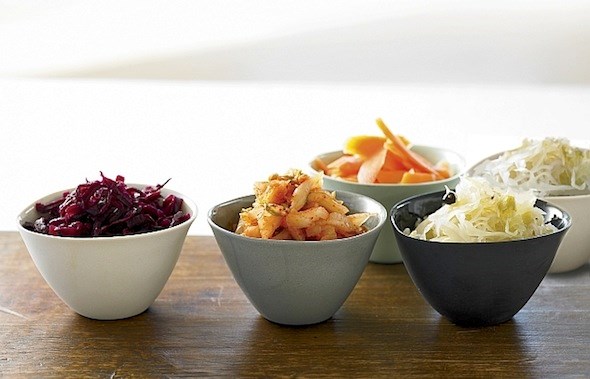
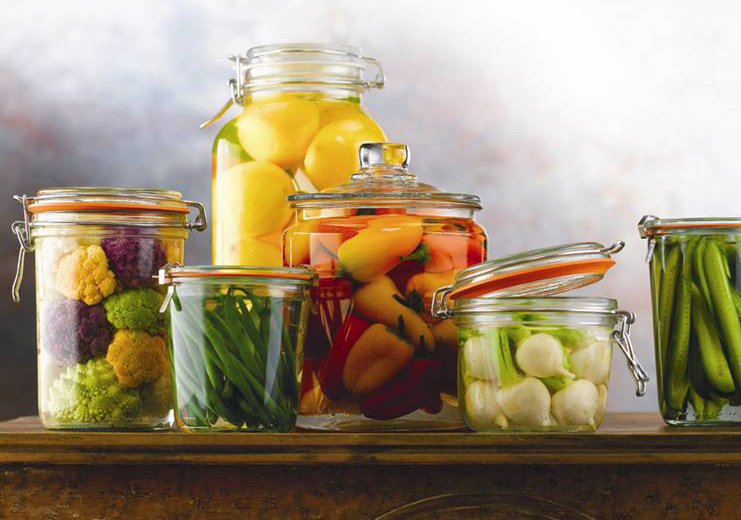
FERMENTED MAGGOTS AND CRICKETS
Noma, the world’s best restaurant, is serving a variety of fermented foods and drinks, such as fermented chocolate-covered mushrooms and a fermented yeast and sourdough petit four. Fermented garlic paste. Fermented potatoes. Fermented plums. Fermented gooseberry. Fermented pumpkin. Fermented grasshoppers. Fermented crickets. Fermented maggots. Yes, you read right. René Redzepi, Noma’s world famous chef, published a video showing how they make their bug sauce, blending barley, grasshoppers and maggots, then leaving it to ferment for six weeks. Redzepi also appeared at a New York Times talk handing out pickled rose hip and fermented cricket paste.
I personally wouldn’t consider eating maggots in any state. Or in the name of haute cuisine. Or in the name of anything. However the world famous chef René Redzepi has expanded our culinary horizon with microorganisms, Noma being known for foraging and fermenting wild, Nordic edibles. Wild foods such as berries, mushrooms, herbs, vegetables, fruits, greens, root vegetables, moss, lichens, etc. “Nordic Coconut” is a hollowed out kohlrabi, filled with fermented cabbage juice flavoured with mushroom and black garlic. The Noma version of a young fresh coconut, served with a straw made of a parsley stem.
Noma made a famous version of the ancient Roman fermented fish sauce, garum. With grasshoppers, instead of fish. They likewise made their own version of miso named peaso – peas fermented for three months with barley.
The signature dish at the new Copenhagen high-end restaurant AMASS is a fermented potato bread, which is indeed one of the best breads I ever tasted, if not the best.
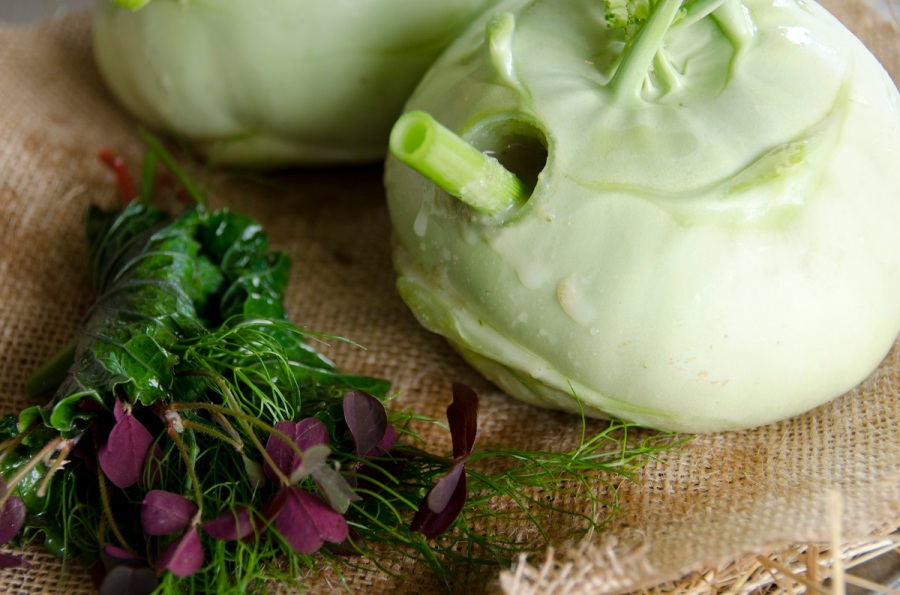 The Noma Nordic Coconut
The Noma Nordic Coconut
EAT MICROBES… WHAT?!
Should you want to try to add cultured foods to your cooking repertoire, here’s a couple of recipes I am very fond of and would like to share with fellow fermenters out there; fluffy dairy-free kombucha waffles, a lovely kombucha sorbet, fermented ramsons and a fresh cucumber-dill pickle and a recipe to spice up your carrot sticks..!
You can go to the forest to find ramsons growing in the forest floor here in Denmark in the spring, frequently in watery areas…
Cultured vegetables are crispy and have a lovely fresh and slightly acidic flavour. And umami taste, like mushrooms, capers, seaweed and soy.
As mentioned before, you would need to make your own RAW, cultured, probiotic yoghurt and kefir to get the benefits of probiotics, as the commercial products in the supermarkets today are useless in that respect. Commercial products that we eat today are pasteurized, meaning that all bacteria have been killed.
The good news is that you can easily make your own cultured yoghurt, cheese, buttermilk, kefir etc. with a probiotic culture from the health food store. You can make lovely nut and seed cheese and yoghurt from various grain milk, nut and seed milk, soy milk, or other.
Here’s how to make your own kombucha sourdough starter and how to make the best coconut water kefir ever:
PREBIOTICS
Prebiotics are the food that your probiotics feed on.
If you eat the right kind of food, you feed your probiotics the food they like – prebiotics – which are high in fiber and fructooiigosaccharides (FOS), to help them survive and thrive and multiply in the gut. Apparently, the probiotics are particularly fond of banana, asparagus, Jerusalem artichoke, beets, onion, chichory and garlic. Mother’s milk is a prebiotic too, supporting the growth of the health-promoting lacto-fermentation bacterias.
Fermentation preserves food and the nutrients of the food, and hence was used for centuries as a way of preserving food. Salsa only lasts a few days in the fridge, whereas fermented homemade salsa lasts months. Lacto-fermentation allows you to store food for longer periods of time without losing the nutrients as you would with canning.
Investing in including healthy foods into your diet can be expensive, but not so with fermented foods. Vegetables and salt are fairly inexpensive. So is the sugar you feed your kombucha mushroom. Occasionally you find kombucha and kefir mushrooms in health food shops, but the way to get them is simply find the nearest kefir or kombucha community and they will usually give you a baby mushroom from one of their members own culture.
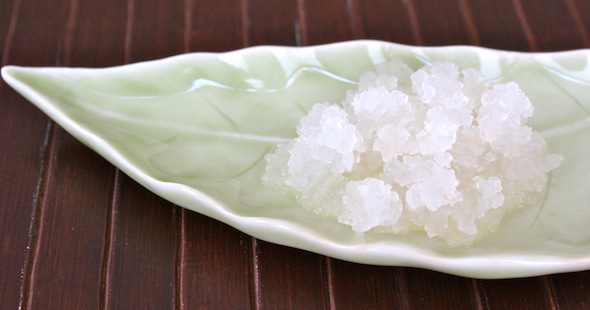
Kefir fungus
SHOULD WE ALL BE EATING SAUERKRAUT..?
Fermented foods may not be the answer to every question and every problem. Well, maybe for people with digestive issues. I know I got rid of bloating and heartburn after adding cultured foods to my diet. Why spend money on probiotic capsules? They’re overpriced and the probiotic bacteria in them are nowhere near as effective as the live bacteria in cultured foods.
I’ve not yet heard of anyone whose health deteriorated after eating lacto-fermented foods. Three people in Koyuk, Alaska, were hospitalised after eating fermented seal flipper and one man from Lower Kalskag, Alaska, is suspected to have died from botulinum poisoning after consumption of fermented fish heads. If you stay away from traditional Alaska native foods, you should be alright. Chances of clostridum botulinum accidently turning up in your Kilner jar producing botulinum toxin, the most lethal poison known to man, is highly unlikely. Botulism bacteria does not turn up in plant food. It comes from the meat.
Good bacteria, bad bacteria. How can one tell the difference? And how to escape the ones that causes havoc? Well, make sure you are getting enough of the friendly, health-giving bacteria is good advice. When going on vacation some place where the bacteria give all non-locals “the runs”, give lacto-fermented foods a try instead of running for the pricy capsules in the pharmacy like all the other tourists.
The good bacteria outnumber the bad…
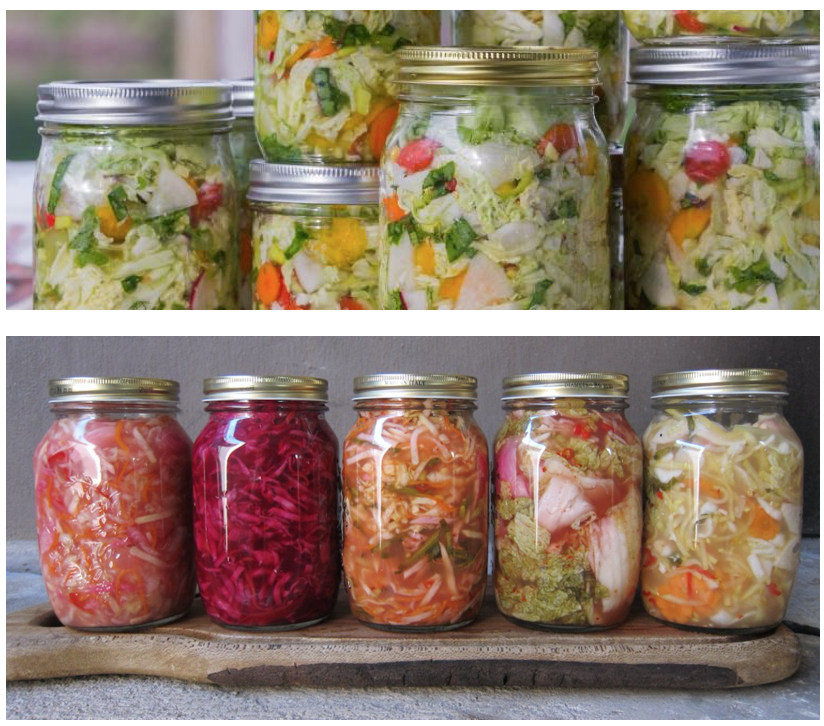
Sources:
Dr. Jensen’s Guide to Better Bowel Care: A Complete Program for Tissue Cleansing through Bowel Management, Dr. Bernhard Jensen
The PH Miracle, Robert O. Young, Warner Books, 2002
http://www.b.dk/viden/gaer-og-bakterier-er-det-nye-noma-mums
http://www.integratedwellnessclinic.com.au/fermented-foods-for-gut-health/
http://www.byrdie.com/fermented-foods-with-probiotics/
http://nourishme.com/blog/?p=342
http://www.capitalfm.co.ke/lifestyle/2015/02/18/why-you-should-eat-more-fermented-foods/
http://gutpower.com/fermented-foods/probiotics-and-fermented-foods-faq/
